Aprašymas
Geotextile Fabric Categories
Looking for top-quality geotextile products at competitive prices? QIVOC as a leading distributor of geotextile materials, offers a wide range of options to suit your needs. From geotextile fabric and membrane to filter cloth and geo fabric, we have it all. Our geotextile price per square meter/foot ensures affordability without compromising on quality. With a network of reliable geotextile suppliers and distributors, we guarantee prompt delivery and excellent service. Whether you require geotextile fabric for sale or custom-buy geotech fabric, we’ve got you covered. Take advantage of our promo geotextile offers today and experience the best in geotextile solutions!
At the same time, we provide geotextiles in the following common weights, you can contact us directly to get a quote.
Common geotextile weights (unit: grams per square meter) include: 4oz, 6oz, 8oz, 10oz, 12oz, 16oz, 80g/m2, 90g/m2, 100g/m2, 110g/m2, 120g/m2, 125g/m2, 130g/m2, 135g/m2, 140g/m2, 150g/m2, 160g/m2, 170g/m2, 180g/m2, 200g/m2, 250g/m2, 300g/m2, 350g/m2, 400g/m2, 500g/m2, 700g/m2, 800g/m2, 1000g/m2…
Explore the details of each geotex fabric by clicking below.
Austinė geotekstilė
Neaustinė geotekstilė
Geotex Fabric Advantages
As a geotextile cloth manufacturer with 20 years of experience, we take pride in the following advantages of our products:
- High Strength: Retains ample strength and elongation in both wet and dry conditions, thanks to the use of plastic fibers.
- Corrosion Resistance: Exhibits long-term resistance to corrosion in soils and waters with varying pH levels.
- Good Water Permeability: The presence of gaps between fibers ensures excellent water permeability.
- Good Anti-Microbial Properties: Remains undamaged by microorganisms and insects.
- Convenient Construction: Its light and soft nature makes it easy to transport, lay, and construct.
- Excellent Anti-Aging Properties: Boasts exceptional resistance to aging, including anti-ultraviolet, anti-ozone, and anti-oxidation properties, ensuring stable use across diverse climate conditions.
- Environmentally Friendly: Primarily composed of synthetic fibers, reducing reliance on natural resources.
- Lightweight: Compared to traditional civil engineering materials, it is lighter and facilitates easier transport, installation, and construction.
- Good Isolation: Effectively isolates soil from sand, and soil from concrete, among other applications.
- Good Filtration/Reverse Filtration: Effectively intercepts soil particles, fine sand, small stones, etc., ensuring the stability of water and soil engineering.
Use of Geotextile Membrane
Geotextile membrane find extensive applications across diverse fields, showcasing excellent versatility and adaptability. Key areas of use include:
- Protection Engineering: Employed for safeguarding earth and rock slopes, riverbanks, dams, and similar structures.
- Road and Railway Engineering: Utilized to reinforce and strengthen soil in highway and railway projects, preventing roadbed settlement, enhancing load-bearing capacity, and extending road service life.
- Water Conservancy Projects: Applied for slope and bank protection in reservoirs and rivers to mitigate water flow, reduce riverbed erosion, and prevent soil erosion.
- Environmental Protection Engineering: Used in landfills for bottom, top, and side isolation layers.
- Construction Engineering: Employed to reinforce foundation soil, prevent soil settlement, and enhance building stability.
- Garden and Landscape Engineering: Utilized for lawn reinforcement in parks, golf courses, green spaces, etc., preventing soil erosion and wear.
- Agricultural Engineering: Applied for soil and water conservation, soil erosion prevention and control, soil structure improvement, and soil fertility enhancement.
- Mining Engineering: Used to stabilize mine pit slopes and reduce slag leakage.
- Traffic Tunnel Engineering: Employed for waterproofing, drainage, and protection in tunnels.
- Marine Engineering: Utilized for coastline protection, construction of artificial islands, etc.
- Anti-Freeze: Serves as an anti-frost and anti-freeze insulation material.
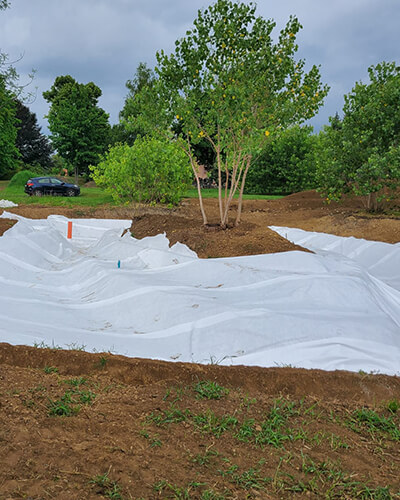
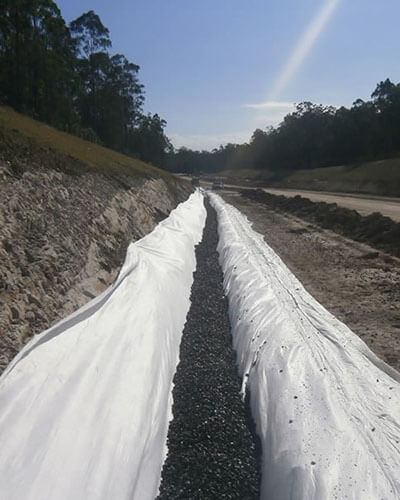
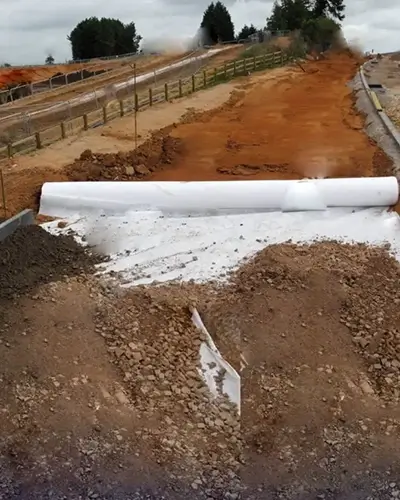
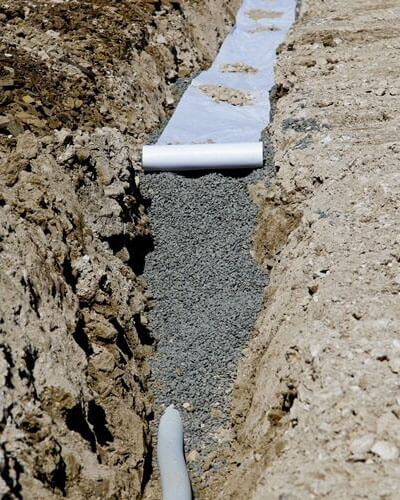
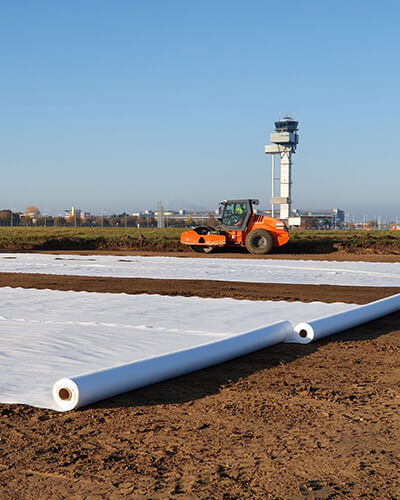
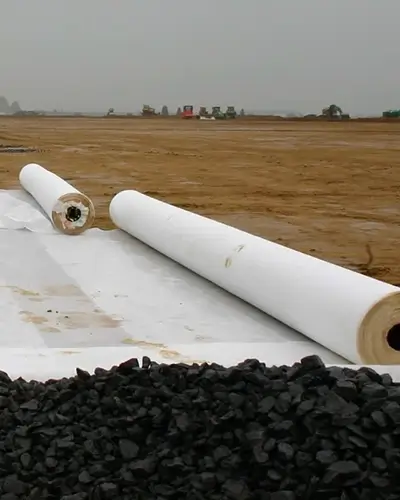
"Turite klausimą? Spustelėkite toliau esantį mygtuką ir kreipkitės į mus tiesiogiai, kad gautumėte asmeninę pagalbą. "
Būkite tikri, kad į jūsų užklausą atsakysime per 2 valandas.
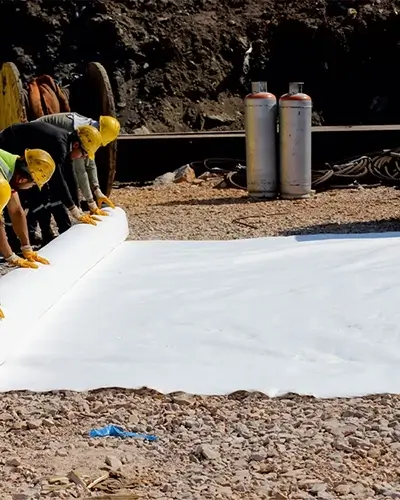
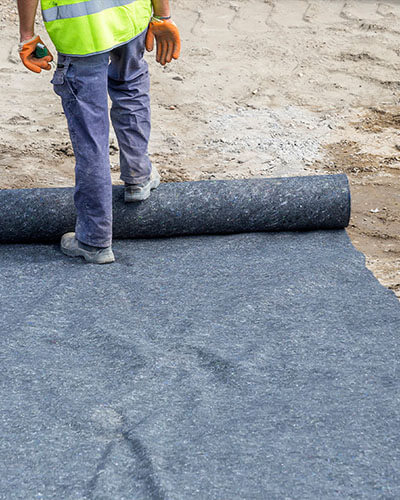
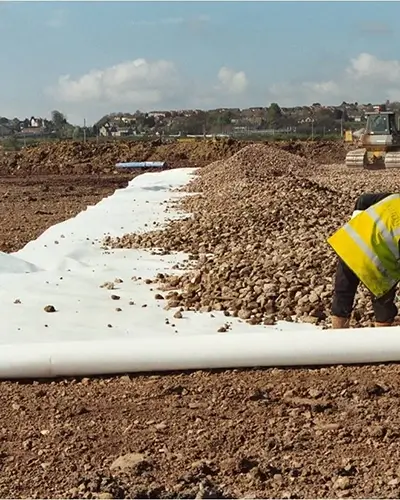
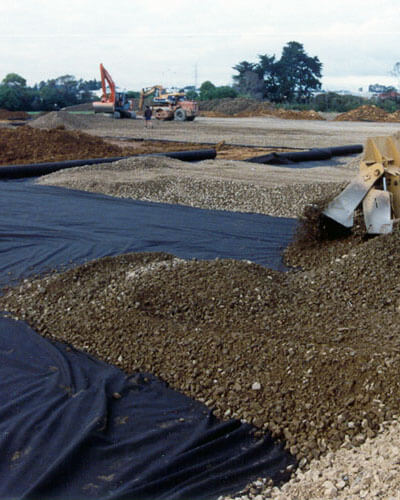
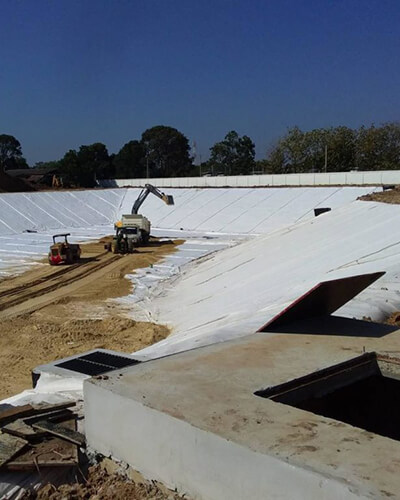
Installer Geotextile Procedures
Using and installing geotex membrane is straightforward and convenient. Below is a standard construction process.
- Užtikrinkite, kad statybvietė būtų lygi ir tvirta, ir tinkamai pašalinkite bet kokius pašalinius objektus.
- Determine the geo fabric size based on site conditions and cut it accurately before laying.
- Roll out and spread the geofabric manually, ensuring a smooth cloth surface and leaving adequate allowance for deformation.
- Patikrinkite, ar plotis yra tinkamas, ir įsitikinkite, kad užlaidos yra lygios ir vidutiniškai glaudžios.
- Užtikrinkite, kad sandūros kirstųsi su nuolydžio linija. Tose vietose, kurios yra subalansuotos su šlaito papėdės linija arba yra veikiamos įtempių, išlaikykite didesnį nei 1,5 m atstumą tarp horizontalių jungčių.
- On slopes, anchor one end of the geo cloth and gently roll it down to maintain tautness.
- Secure all geo fabric cloth with sandbags during laying, retaining them until the top layer of material is placed.
- For filament or short-filament geotextiles, use methods like overlapping, sewing, and welding during installation. The width of stitching and welding should generally exceed 0.1m, and the overlap width should be more than 0.2m. Drainage fabric exposed for an extended period should be welded or stitched.
- Employ a hot air gun to bond overlapping parts of two geotech fabrics, ensuring appropriate spacing between bonding points. When suturing overlaps, use materials resistant to chemical damage and UV irradiation. Maintain straight and even stitches.
- After sewing, inspect the geotech cloth for flatness and defects. Address any issues promptly during repairs. When patching holes or cracks, use patch material consistent with the geotechnical cloth, extending at least 30 cm beyond the damaged area.
Precautions for Installation of Geotextile Cloth
While the construction of geotextile drainage fabric is relatively simple, attention to the following considerations is crucial during installation. Here are specific precautions for filter fabric for drainage installation:
- Use a geotextile knife (hook knife) exclusively for cutting filter cloth for drainage. If on-site cutting is necessary, take special protective measures for other materials to prevent inadvertent damage to the geotextile.
- During drainage and filtration fabric installation, ensure no entry of stones, excessive dust, moisture, or other substances that may complicate subsequent connections into or underneath the geotextile filter fabric.
- After installation, visually inspect all geotextile filter cloth surfaces for damage, marking and repairing any areas as needed. Ensure no foreign objects, such as broken needles, are present that could cause damage.
- Filtration geotextile connections must adhere to specific regulations. Generally, horizontal connections on slopes are not allowed, except for repaired areas.
- If stitching is used, the suture line material should match or exceed the geo fabric material. It must resist chemical and ultraviolet rays, with a noticeable color difference from the geotextile for easy inspection.
- During installation, pay special attention to seams to prevent soil or gravel from entering the middle of the soakaway membrane.
Geotextile layer damage and repair:
- At suture joints, re-sew and repair, ensuring skipped stitches are properly addressed.
- In all areas, except rocky slopes, holes or tears must be repaired and stitched with geotech membrane patches of the same material.
- At the bottom of landfills, if a crack exceeds 10% of the roll width, cut off the damaged part and connect the two sections of the geotextile mat.
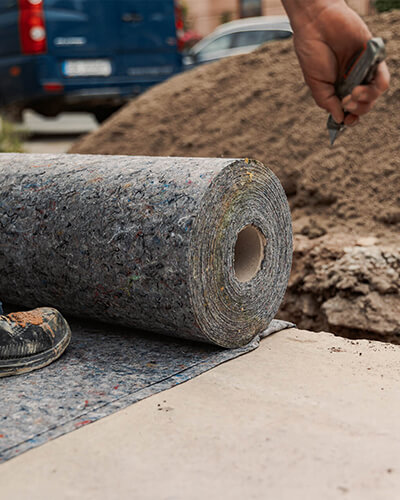
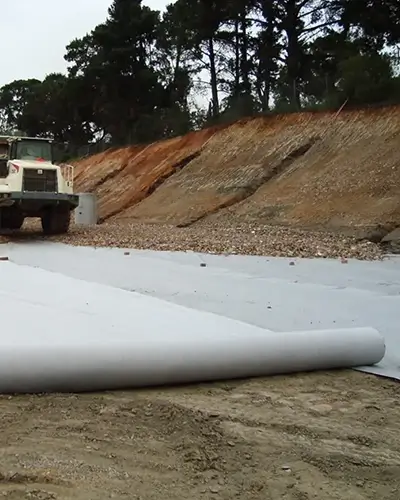
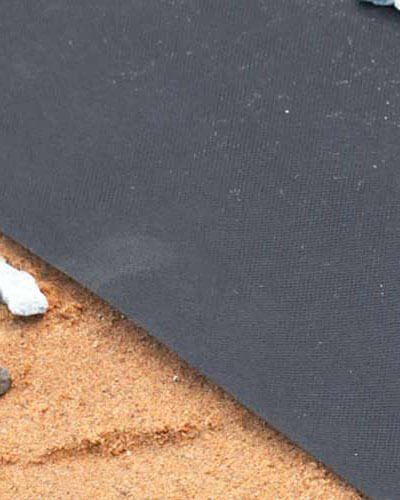
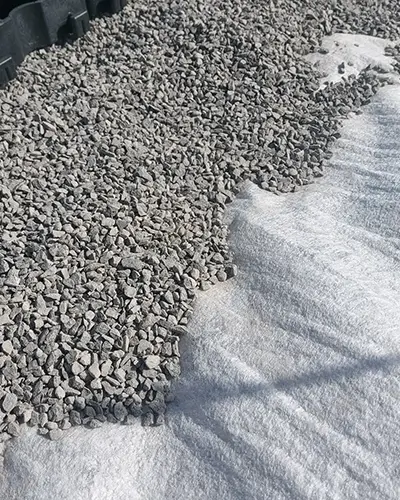

"Atraskite mūsų išskirtinius produktus! Susisiekite su mumis dabar, kad gautumėte visą katalogą ir asmenines citatas."
Būkite tikri, kad į jūsų užklausą atsakysime per 2 valandas.
Geo Fabric Cloth Production Process
The raw materials of geotextiles are mainly synthetic fibers, the most commonly used are polyester fibers and polypropylene fibers, followed by polyamide fibers and polyvinyl acetal fibers.
The production processes for non-woven geotextiles include spunbond needle-punch technology for filament and needle-punch technology for short fibers.
Spunbond needle-punch technology for filament involves heating and melting polymers to spin continuous filament bundles. These bundles are then drawn by airflow to impart strength to the fibers, which are irregularly laid on a conveyor belt to form a fiber web. Before the filament bundles fully solidify, they are reinforced using the needle-punch method, resulting in a one-step formation process for the non-woven fabric. The geotextiles produced using this method exhibit superior tensile strength, tear strength, elongation at break, and longitudinal-transverse ratio compared to short-fiber needle-punched geotextiles. This makes them much more suitable for engineering applications such as reinforcement and stabilization.
Short-fiber needle-punch technology involves heating and melting polymers to produce fibers that are spun, drawn, crimped, set, cut, and packed into short fiber materials. These short fibers undergo opening, carding, web forming, and needle-punching to consolidate into the fabric, following a two-step formation process for the non-woven fabric. This product has significant thickness, high density, a fluffy structure, excellent water absorption and permeability, and strong deformation resistance, making it particularly suitable as a filtration material.
The production process for woven geotextiles includes techniques such as weaving and machine weaving.
The production of woven geotextiles involves transforming polymer materials into filaments through melting, extrusion, and stretching processes. These filaments are then interwoven using weaving or machine-weaving techniques. Post-processing methods, including heat setting and coating, enhance the woven geotextiles’ stability, abrasion, and corrosion resistance. After post-processing, the geotextiles are cut and packaged according to specific requirements.
Geotech Fabric Quality Control
During the production process, geotech fabrics need to undergo strict quality inspections to ensure that their performance meets relevant standards and specifications.
Quality inspections include appearance inspections, dimensional measurements, tensile strength tests, tear strength tests, bursting strength tests, and many other indicators.
Only geotech fabric that passes quality inspections can be shipped.
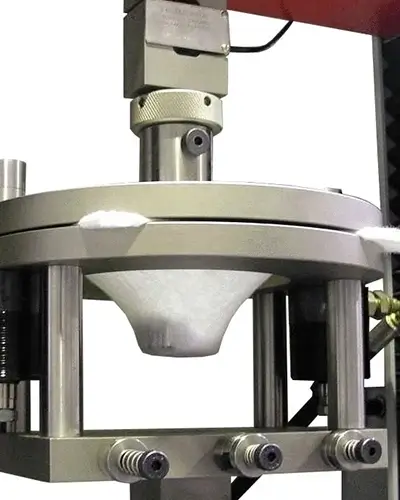
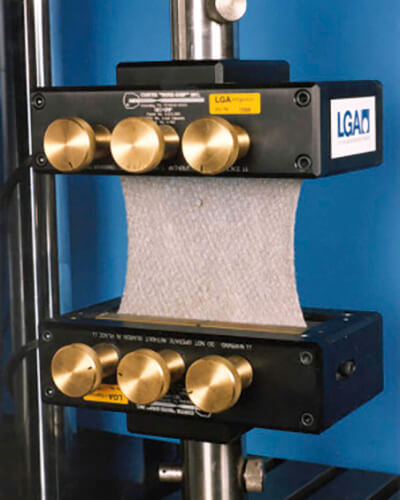
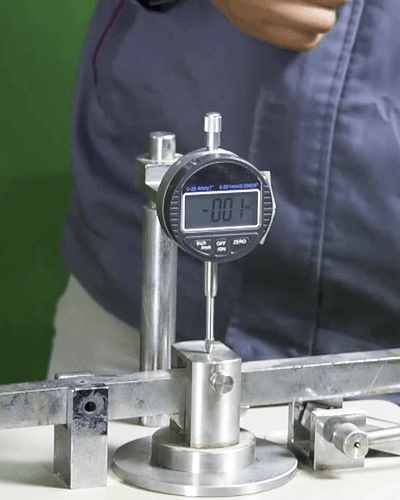
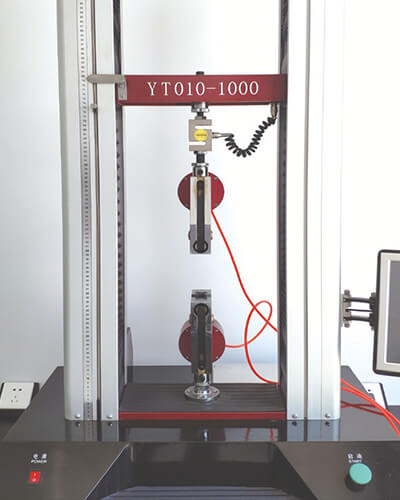
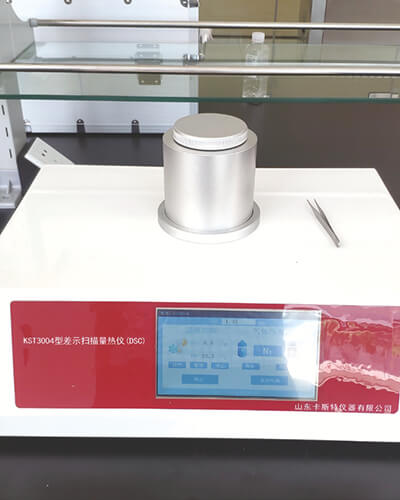
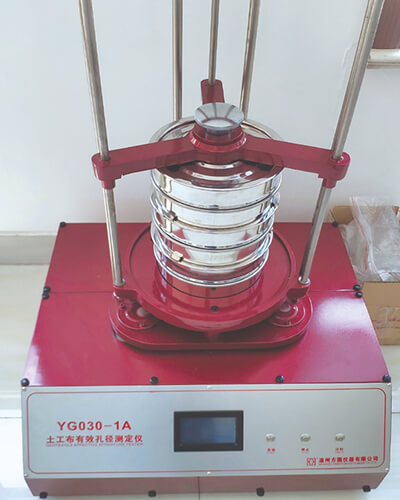
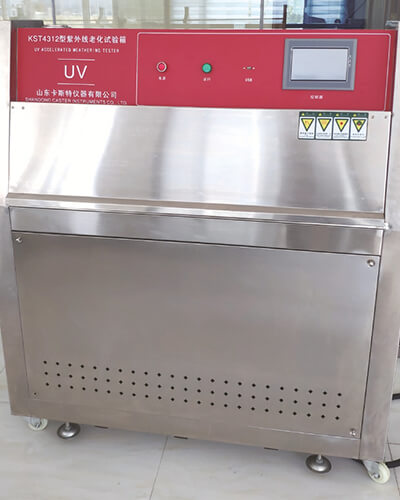
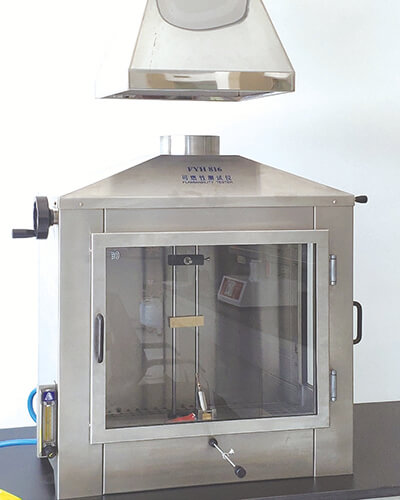
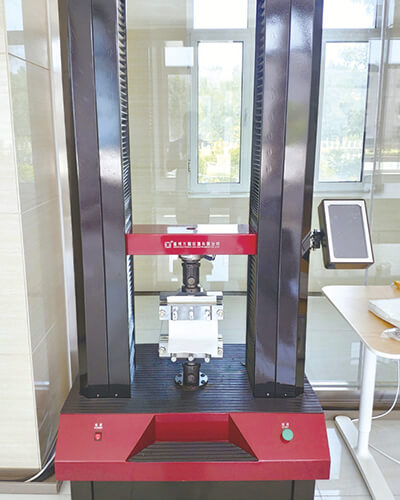
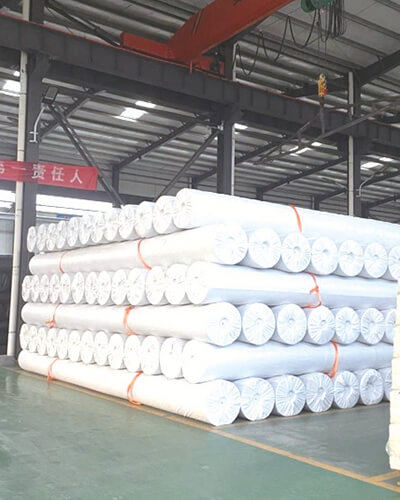
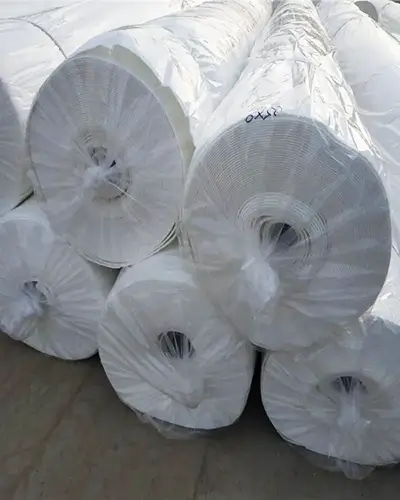
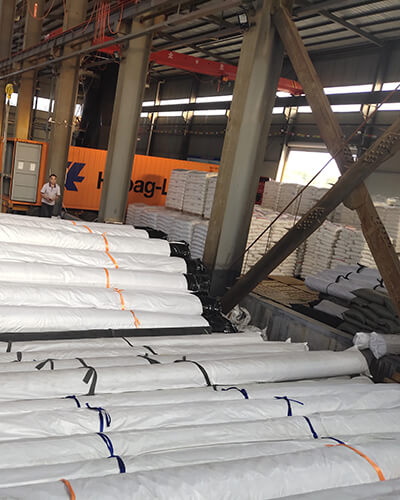
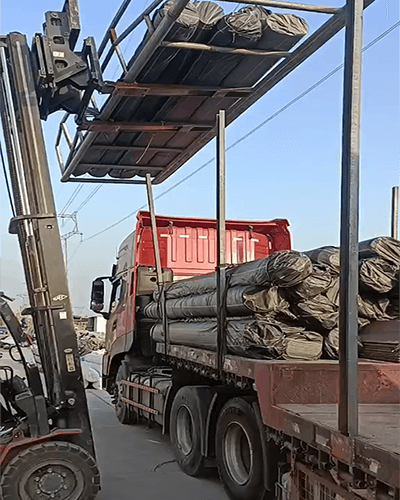
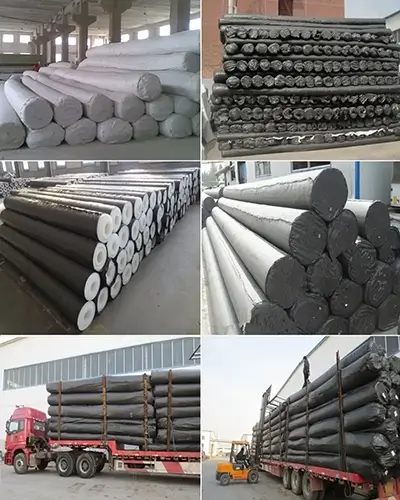
Geo membranos pakavimas, transportavimas
Geotextile that have passed the quality inspection will be packaged and stored to ensure the integrity and stable quality of the product.
Pakuotės paprastai būna supakuotos į austus maišelius arba pagal jūsų individualius reikalavimus, o ant pakuotės nurodomos gaminio specifikacijos, partijos numeris, pagaminimo data ir kita informacija.
Numatytasis transportavimo būdas paprastai yra krovinių gabenimas jūra arba sausuma. Jis taip pat gali būti gabenamas pagal jūsų reikalavimus.
Naujausi projektai
Susipažinkite su naujausiais mūsų klientų projektais ir ištirkite mūsų teikiamos individualiai pritaikytos pagalbos spektrą. Pasidalykite savo reikalavimais ir gaukite idealų sprendimą.
Dažnai užduodami klausimai
Austos geotekstilės gaminamos iš poliesterio, polipropileno, polietileno ir kitų pluoštų, kurie tarpusavyje susipina audimo arba adatinio perforavimo būdu. Jos struktūra panaši į audinio - susipynusių pluoštų tinklinė struktūra. Paprastai jis pasižymi dideliu atsparumu tempimui ir plyšimui, todėl dažnai naudojamas civilinės inžinerijos, kelių, užtvankų, rampų ir kituose inžineriniuose projektuose, kuriems reikalingas didelis atsparumas tempimui ir plyšimui.
Neaustinė geotekstilė formuojama išlydytus sintetinius pluoštus purškiant, dengiant ir pan. į amorfinį pluoštų tinklą, po to juos sujungiant tokiais procesais kaip terminis surišimas arba sutankinimas, be jokios akivaizdžios pluoštų persipynimo struktūros. Neaustinė geotekstilė paprastai yra lengvesnė ir minkštesnė už austinę geotekstilę. Dažnai naudojamos sodininkystėje, žemės ūkyje, hidroizoliacijos, filtravimo ir kitose srityse.
Geotekstilė yra pralaidi, todėl pro ją gali prasiskverbti vanduo. Pagrindinė geotekstilės funkcija - filtruoti ir neleisti prarasti dirvožemio dalelių, o ne trukdyti vandeniui prasiskverbti.
Žinoma. Galime pritaikyti gamybą pagal jūsų reikalavimus.
Minimalaus užsakymo kiekio reikalavimo neturime. Nesvarbu, kokio kiekio produktų jums reikia, mes suteiksime jums profesionalų ir draugišką aptarnavimą.
Siūlome 1 m-6 m pločio ir galime pritaikyti gamybą pagal jūsų reikalavimus.
Įprasta "QIVOC" siūloma spalva yra balta.
Tuo pačiu metu galime pritaikyti gamybą pagal jūsų reikalavimus, pavyzdžiui, juodą, rudą ir kt.

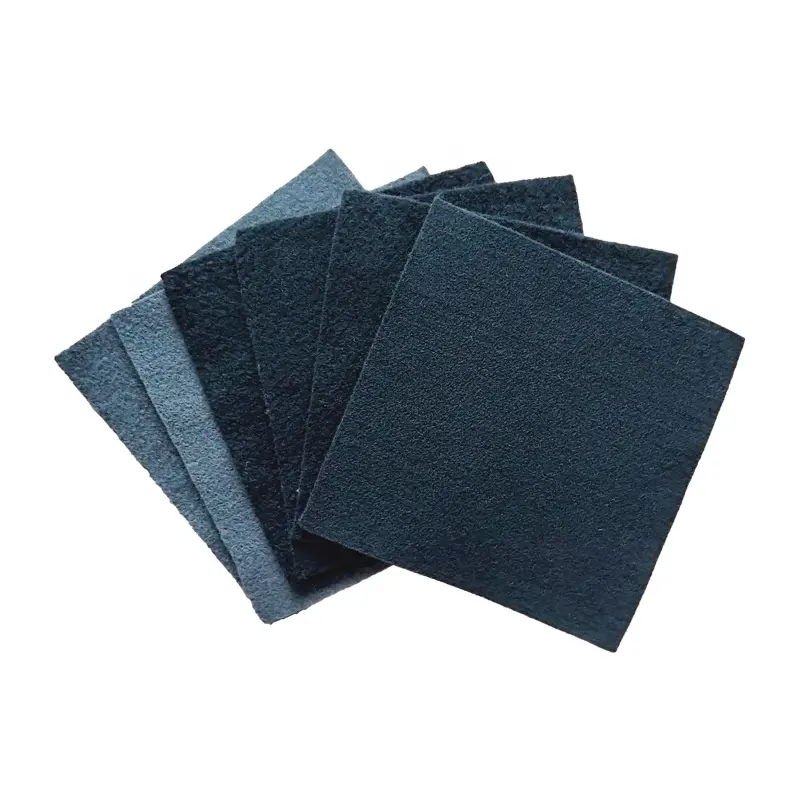
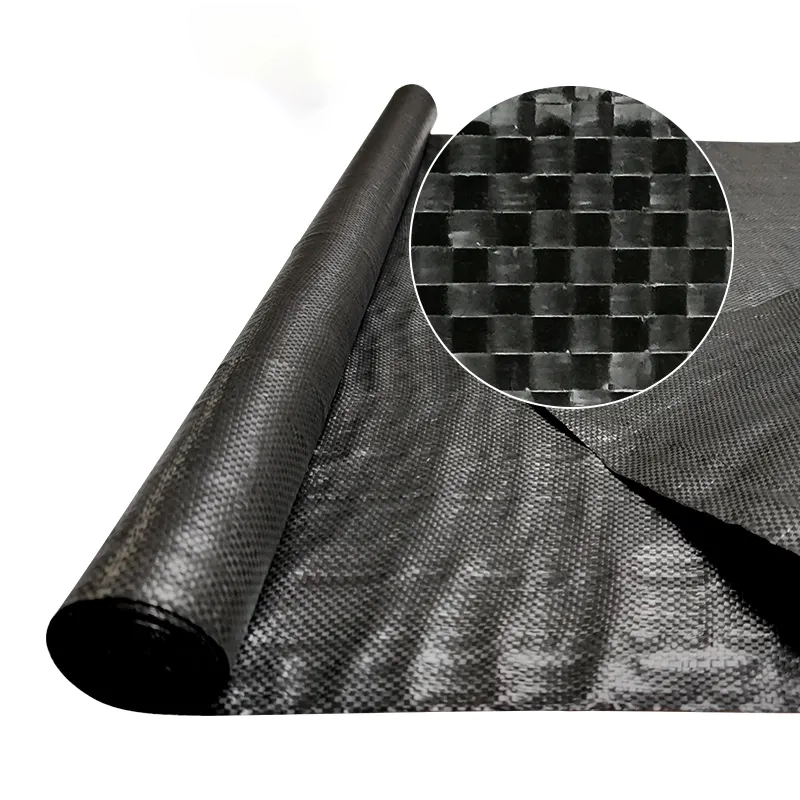
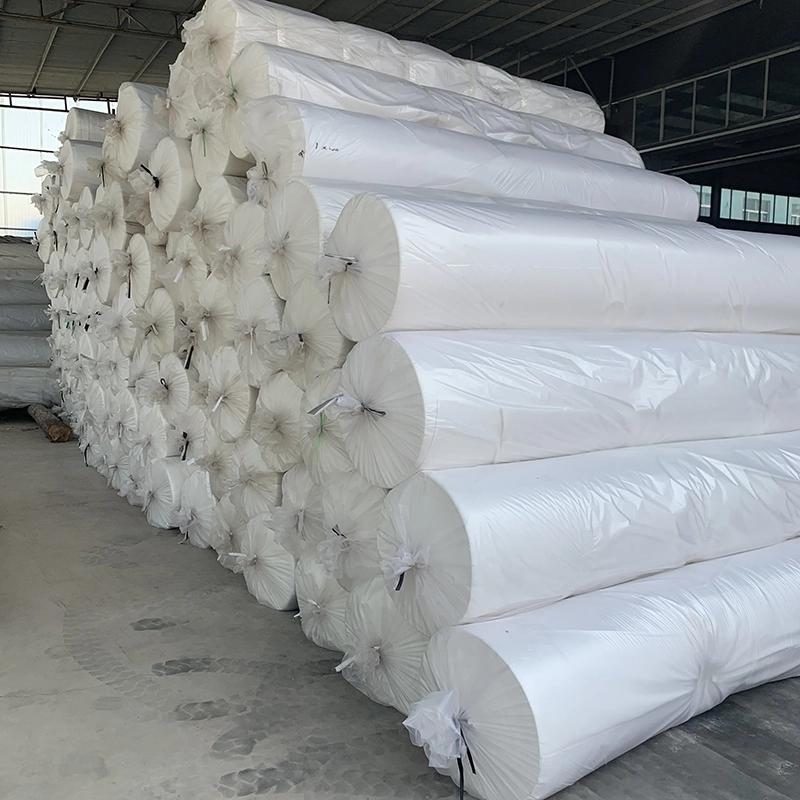
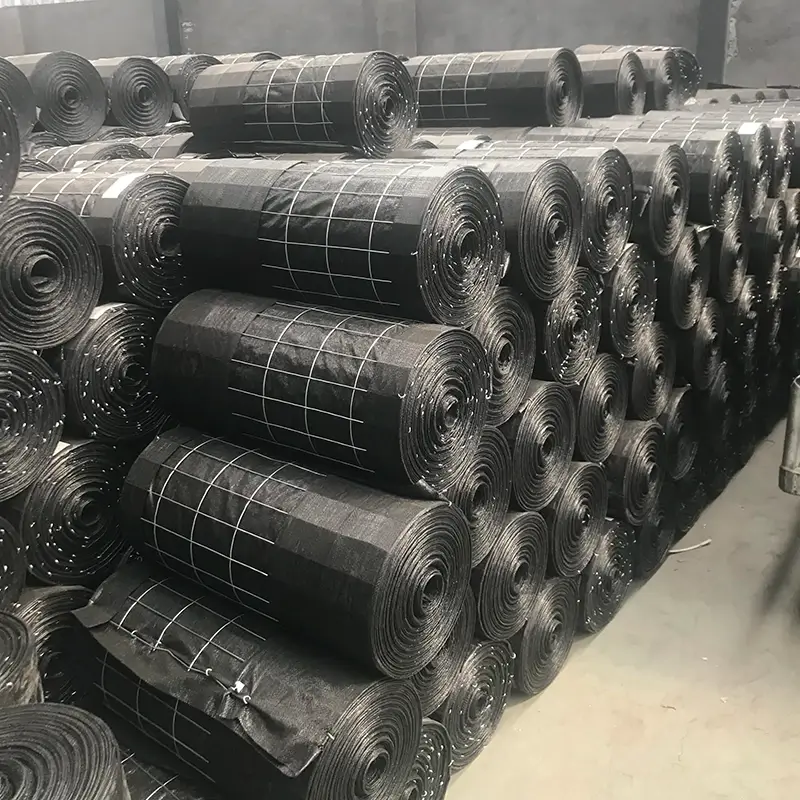
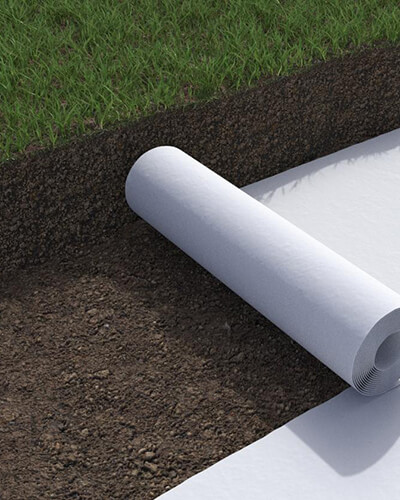
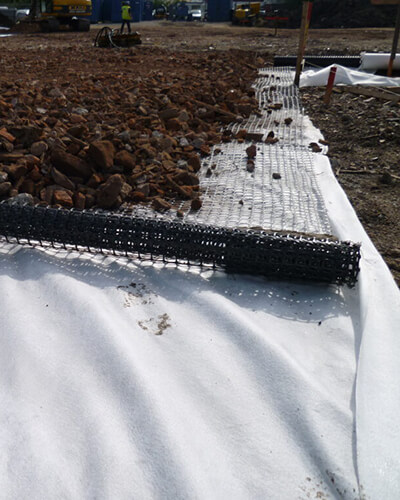
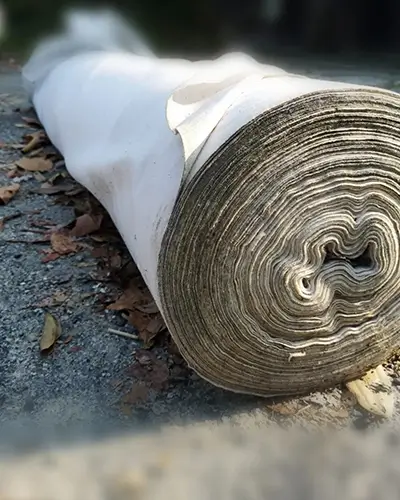
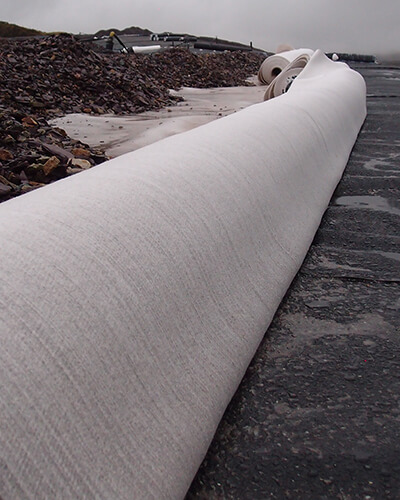
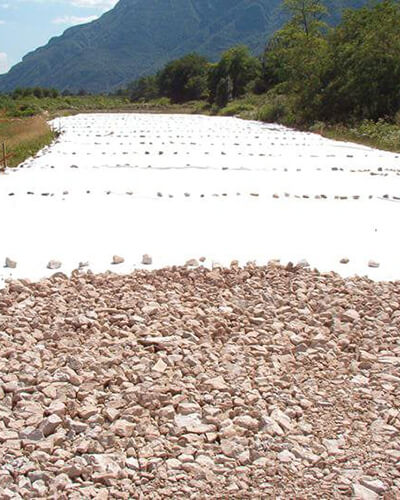
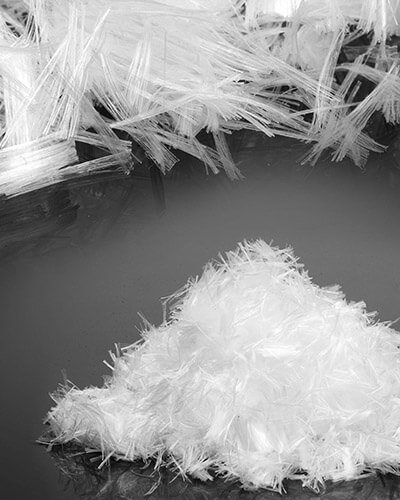
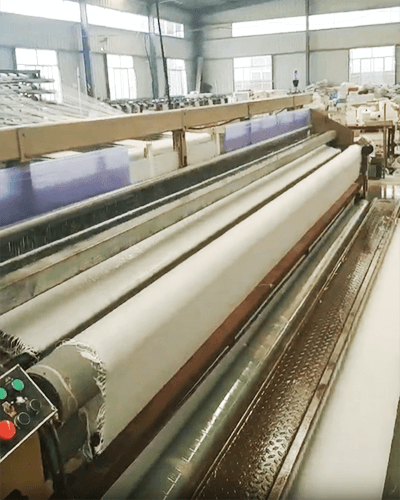
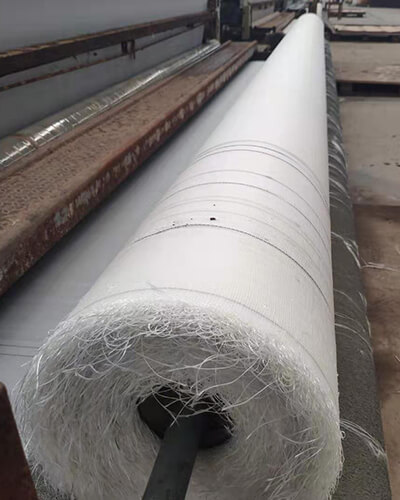
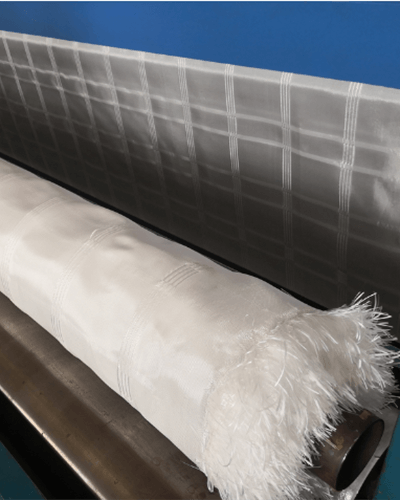
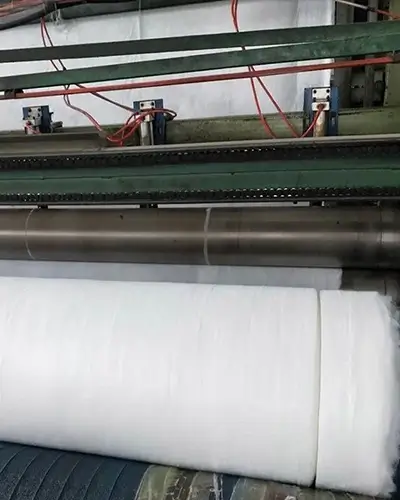
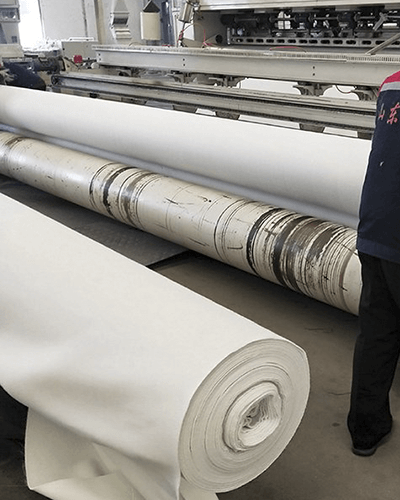
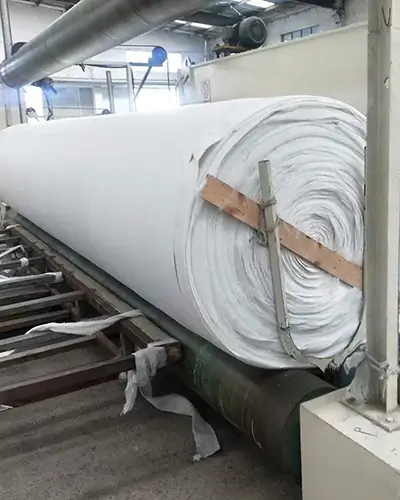
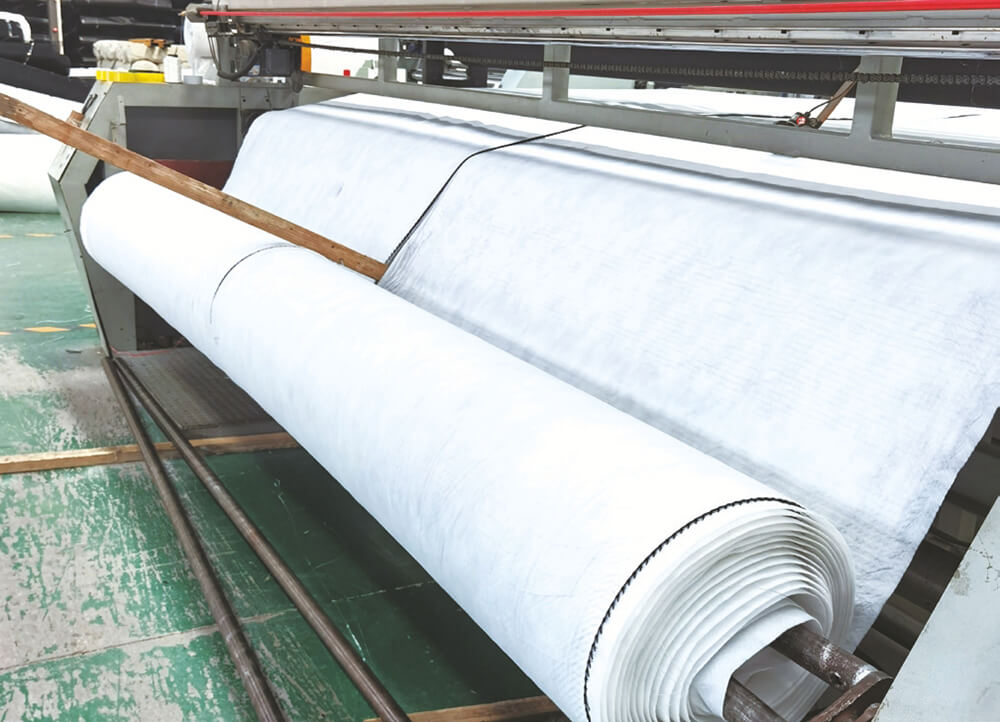
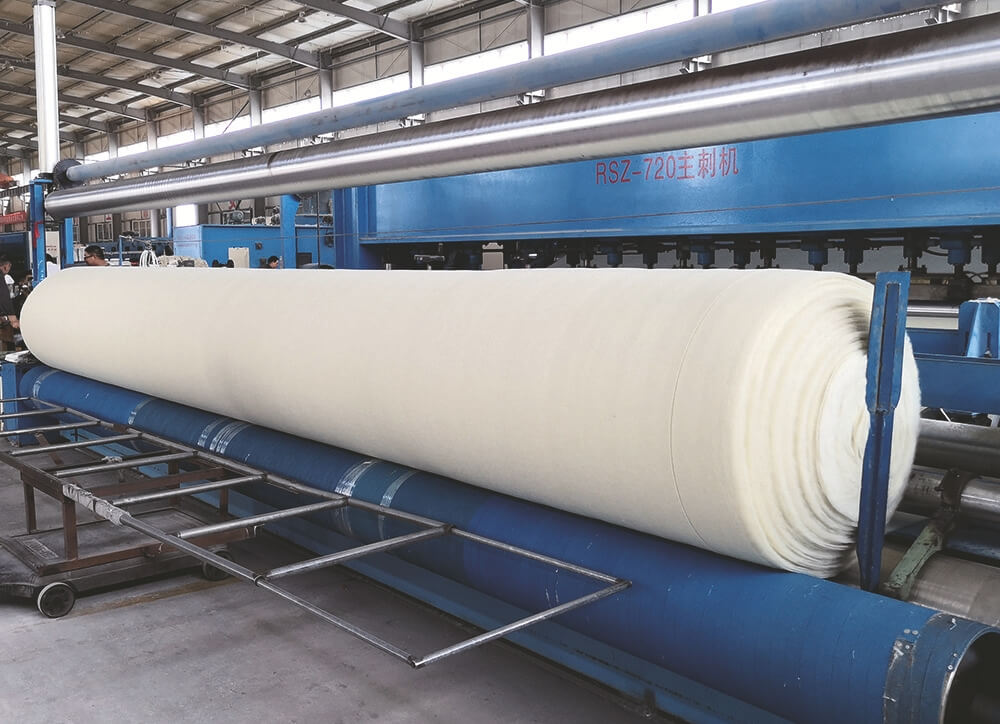
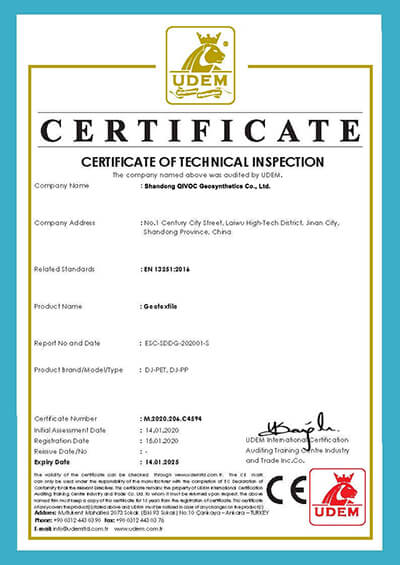
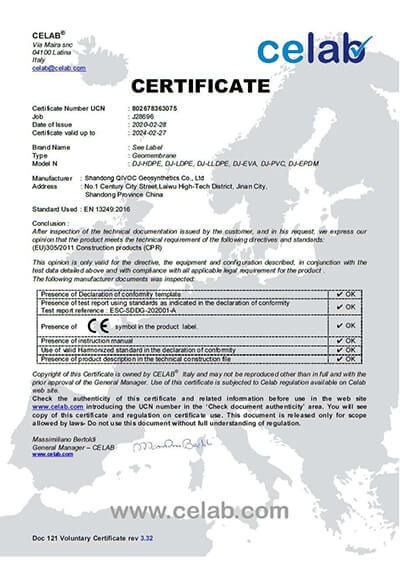
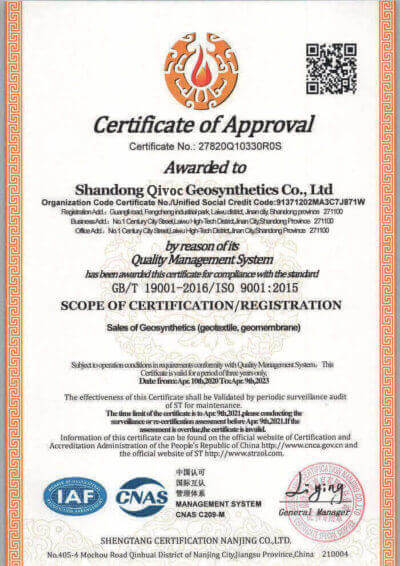
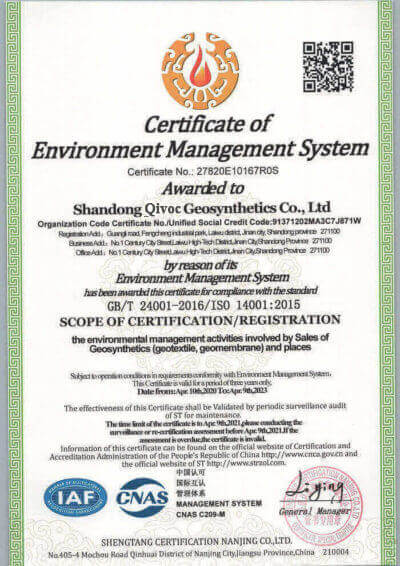
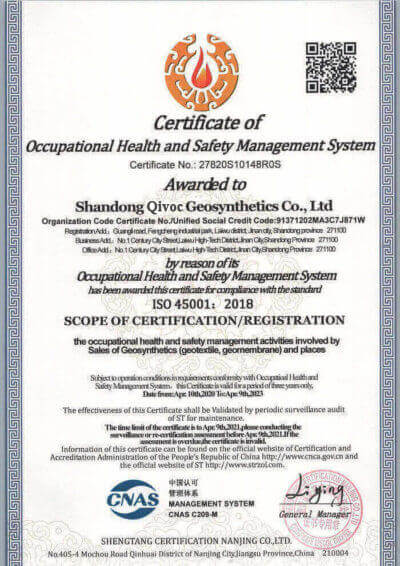

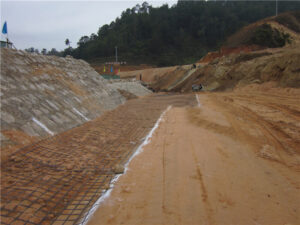
João Silva -
Product samples look very good, affordable pricing, looking to continue working together in the future.